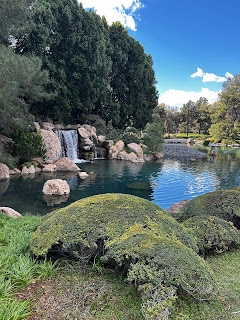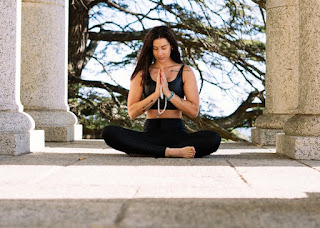Applying Jhana Meditation Insights to Everyday Life
Applying Jhana Meditation Insights to Everyday Life
Jhana meditation offers deep states of absorption, serenity, and insight. While the experiences during meditation are often profound, their real value comes from how we integrate the wisdom and insights gained into our everyday lives. Over the years, I’ve discovered that the lessons from Jhana meditation have fundamentally shifted how I approach the world, relationships, work, and even my sense of self.
In this article, I’ll share how the insights from Jhana practice have become part of my daily routine, allowing me to navigate the ups and downs of life with more equanimity, mindfulness, and inner peace. Whether you are new to Jhana meditation or have been practicing for years, these principles can serve as a guide to integrating meditation into your everyday experience.
Letting Go of Clinging to Outcomes
One of the core insights of Jhana meditation is the necessity of letting go. The Jhanas cannot be forced or clung to—they arise naturally when the conditions are right. This lesson has been invaluable in my everyday life, particularly in how I approach goals and challenges.
In my professional and personal life, I often found myself clinging to specific outcomes, whether it was reaching a milestone at work or resolving a conflict in a relationship. This attachment to outcomes created unnecessary stress and anxiety. However, by applying the principle of letting go from my Jhana practice, I’ve learned to focus on the process rather than the result.
When I approach tasks with the same mindset I use in meditation—cultivating the right conditions but releasing my attachment to the outcome—I find that things unfold more naturally and with less resistance. Letting go doesn’t mean becoming passive, but rather allowing things to flow without being tied to a specific result. This has helped me live with more peace and less stress.
Cultivating Mindfulness in the Present Moment
The deep concentration required in Jhana meditation hones the ability to be fully present in the moment. This skill can be applied to everyday activities, making life feel more vibrant and less fragmented.
Whether I’m washing the dishes, having a conversation, or walking the dog, I try to bring the same sense of mindfulness to each moment as I do during meditation. This helps reduce the mind’s tendency to wander into distractions or worries about the future.
When fully immersed in the present, even mundane tasks take on a new richness. The awareness cultivated in Jhana practice allows me to be more connected to whatever I am doing, making life more enjoyable and helping me engage with the world more deeply.
Embracing Impermanence
In Jhana meditation, each state is fleeting. We move through different layers of absorption, from bliss to equanimity, and eventually, even these fall away. This experience of impermanence can be directly applied to how we navigate the inevitable changes in life.
Whether it’s the end of a joyful experience or the passing of a difficult one, the insight of impermanence reminds me that all things change. By embracing this truth, I’ve been able to navigate both success and failure with more grace. Instead of getting caught up in the highs and lows, I remind myself that everything—good or bad—will eventually pass.
This understanding doesn’t mean we shouldn’t enjoy the good moments or work to improve difficult situations, but it helps us maintain a balanced perspective, reducing suffering when life doesn’t go as planned.
Equanimity in Daily Life
One of the hallmarks of the deeper Jhanas is equanimity—a state of calm balance where the mind is undisturbed by pleasure or pain. In everyday life, this translates to the ability to stay centered and calm, regardless of external circumstances.
Equanimity has become a cornerstone in how I handle stress, conflicts, and even unexpected challenges. In the past, a difficult conversation or an unforeseen setback could throw me off balance, leading to frustration or anxiety. Now, when such moments arise, I draw on the equanimity I’ve cultivated in meditation.
This doesn’t mean I don’t feel emotions, but rather that I can experience them without becoming overwhelmed. Equanimity allows me to respond to situations with clarity and calmness, rather than reacting impulsively out of fear, anger, or attachment.
Compassion and Loving-Kindness
Though Jhana meditation is primarily a concentration practice, it naturally leads to an outpouring of loving-kindness (metta) and compassion as the mind becomes purified. In my daily life, this has translated into greater empathy and patience with others.
I’ve noticed that after deep meditation, I am more inclined to act from a place of compassion, whether it’s being more understanding with a loved one or offering kindness to a stranger. This shift has been transformative, especially in relationships, where I’ve found that practicing compassion softens conflicts and deepens connections.
Bringing loving-kindness into everyday life also means being kinder to myself. Jhana meditation has shown me the importance of self-compassion. Instead of being critical or judgmental of myself when I make mistakes, I’ve learned to be more forgiving, allowing room for growth without unnecessary self-blame.
Letting Go of the Sense of Self
In the deeper stages of Jhana, the sense of self can dissolve, offering a glimpse into a reality beyond the ego. This insight has profoundly impacted how I see myself and my relationship to the world.
In everyday life, this means I’m less attached to my identity and ego-driven desires. I’ve come to understand that the sense of “I” is fluid and not as solid as it seems. This realization helps me let go of the need to constantly prove myself or defend my ego in situations where I might have once felt threatened.
By loosening my attachment to the sense of self, I’ve found greater freedom. Decisions are less about what “I” want and more about what serves the greater good or what aligns with my deeper values. This has made life more fulfilling and less driven by superficial desires or external validation.
Patience and Non-Striving
Jhana meditation requires a great deal of patience. The deeper states don’t come easily or quickly, and trying to force them only leads to frustration. This has been one of the most valuable lessons for me in everyday life—learning to be patient and let things unfold in their own time.
In a world that often demands instant results, Jhana practice has taught me the importance of non-striving. By releasing the constant push for progress, whether in meditation or in life, I’ve found a deeper sense of peace and contentment. Patience allows us to work steadily toward our goals without becoming fixated on immediate success.
This non-striving mindset has also helped me appreciate the present moment more. Instead of always rushing to the next thing, I can rest in the experience of now, trusting that everything will unfold as it should.
Conclusion
The insights gained from Jhana meditation are not meant to be left on the cushion—they are meant to be lived. Whether it’s letting go of attachment, cultivating mindfulness, or embracing equanimity, the lessons of Jhana practice can be applied to every aspect of life.
By integrating these insights into our daily routines, we can live with more peace, clarity, and compassion. The wisdom of the Jhanas reminds us that true happiness and freedom come not from external circumstances but from within. As we continue to practice and bring these insights into our lives, we can navigate the world with greater ease and joy.
Resources for Deepening Your Meditation Practice with the Jhanas
- Entering the Formless Jhanas: My First Steps into Infinite Space
Read the full article - Common Pitfalls and Misconceptions About the Jhanas: What I’ve Learned
Explore insights - Achieving Equanimity in the Fourth Jhana: My Experience
Discover more - Meditation and Creativity: 10 Techniques to Unlock Your Creative Potential
Learn techniques - Reflection on My Jhana Journey: Integrating Meditation Insights
Read reflections - How the Jhanas Have Transformed My Spiritual Path
Explore transformation - Applying Jhana Meditation Insights to Everyday Life
Apply insights - My Journey into the Third Jhana
Read about the third Jhana - The Journey to the Second Jhana
Explore the second Jhana - Finding Joy and Tranquility in the First Jhana: Personal Reflections
Discover joy and tranquility






